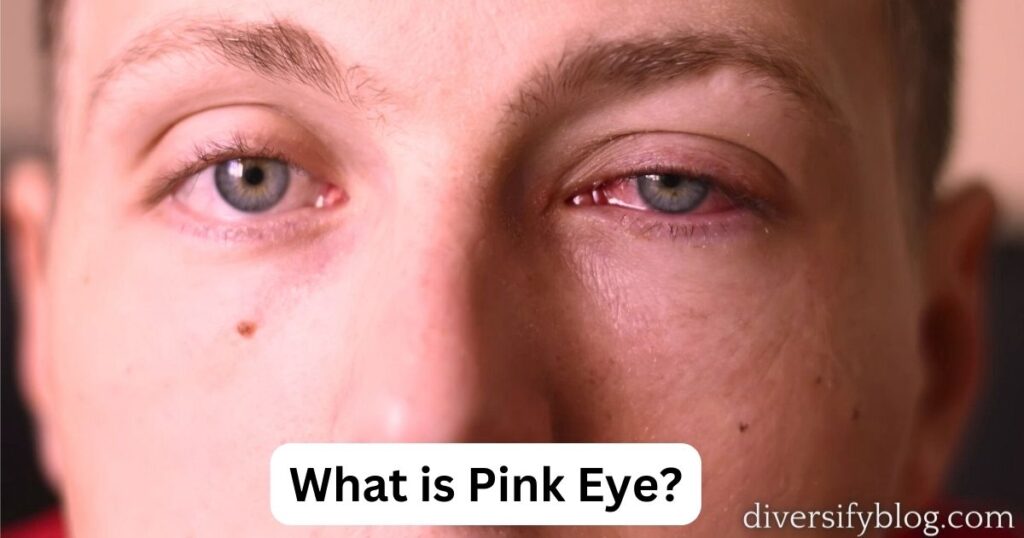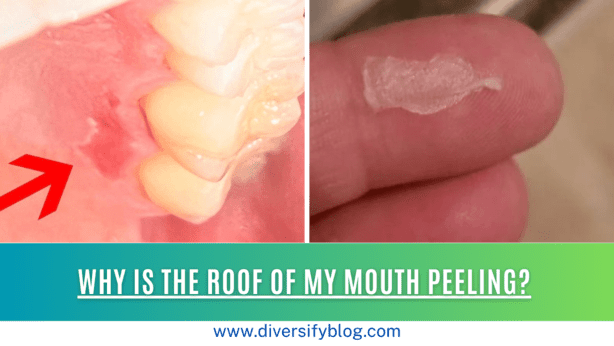Introduction:
It can be hard to figure out how to take care of your eyes, especially when you’re dealing with common problems like pink eye and styes. This detailed guide goes into great detail about the subtle differences between these two eye problems and how to spot, treat, and avoid them. You’ve come to the right place if you’ve ever wondered what the difference is between pink eye and styes. Let’s go on a trip to clear up these eye problems and give you the tools you need to protect your eye health properly.
Pink eye, which is also called conjunctivitis, and styes, which is what doctors call hordeolum, are common eye problems that can be painful and irritate the eyes. However, even though some of their signs are similar, they are not the same and have different reasons. By breaking down the differences between pink eye and styes, we hope to give you the knowledge you need to tell the difference between the two correctly.
This piece will talk about the signs, causes, treatment choices, ways to avoid getting them, and signs that you should see a doctor about pink eye and styes. This guide is designed to cover all of your worries, whether you’re having trouble with redness, itching, or swelling around the eyes, or you’re just looking for ways to keep your eyes healthy.
So, without further ado, let’s start our exploration of “pink eye vs. stye,” clearing up the secrets surrounding these common eye problems and giving you the tools to confidently and clearly navigate your eye health journey.
Table of Contents
What is Pink Eye?
Pink eye, also known as conjunctivitis, is a common eye condition that can be caused by various factors such as infections, allergies, or irritants. Here’s a detailed guide to understanding pink eye:

Definition
Pink eye is an inflammation of the membrane that lines the white part of your eye and the inside of your eyelids, known as the conjunctiva.
Causes
- Infections: Pink eye can be caused by viral or bacterial infections. Viral conjunctivitis is highly contagious and often spreads through direct contact with infected individuals or contaminated surfaces. Bacterial conjunctivitis can result from bacteria such as Staphylococcus aureus or Streptococcus pneumoniae.
- Allergies: Allergic conjunctivitis occurs when the eyes react to allergens such as pollen, dust, or pet dander. This type of pink eye is not contagious and usually occurs seasonally or when exposed to specific allergens.
- Irritants: Exposure to irritants like smoke, pollution, or chemicals can also lead to pink eye. This form of conjunctivitis is non-infectious and typically resolves once the irritant is removed.
Symptoms
Pink eye can present with various symptoms, including:
- Redness or pinkness in the affected eye(s).
- Watery or mucous discharge, which may cause crusting around the eyelashes.
- Itchiness and irritation in the eyes.
- Swelling of the eyelids.
- Sensitivity to light.
- Feeling like there’s something in the eye.
Diagnosis
A healthcare professional can diagnose pink eye based on the symptoms and a physical examination of the eyes. In some cases, additional tests may be performed to determine the underlying cause, such as swabs for bacterial cultures or allergy testing.
Treatment
Treatment for pink eye depends on the cause:
- Viral conjunctivitis: Antiviral medications may be prescribed to alleviate symptoms, but viral infections often resolve on their own without treatment.
- Bacterial conjunctivitis: Antibiotic eye drops or ointments are commonly used to clear bacterial infections.
- Allergic conjunctivitis: Avoiding allergens and using antihistamine eye drops or oral medications can help manage symptoms.
Prevention
Practicing good hygiene, such as washing hands frequently, avoiding touching the eyes, and not sharing personal items like towels or cosmetics, can help prevent the spread of pink eye.
Causes of Pink Eye:
Pink eye, also known as conjunctivitis, can be caused by various factors, including infections, allergies, or irritants. Here’s an overview of the common causes of pink eye:
Viral Infections:
- Viral conjunctivitis is often caused by viruses such as adenovirus or herpes simplex virus.
- This type of pink eye is highly contagious and can spread through direct contact with infected individuals or contaminated surfaces.
Bacterial Infections:
- Bacterial conjunctivitis is typically caused by bacteria such as Staphylococcus aureus or Streptococcus pneumoniae.
- It can result from poor hand hygiene, sharing personal items like towels or cosmetics, or exposure to contaminated surfaces.
Allergies:
- Allergic conjunctivitis occurs when the eyes react to allergens such as pollen, dust, or pet dander.
- This type of pink eye is not contagious and usually occurs seasonally or when exposed to specific allergens.
Irritants:
- Exposure to irritants like smoke, pollution, chemicals, or contact lenses can lead to irritant-induced conjunctivitis.
- This form of pink eye is non-infectious and typically resolves once the irritant is removed.
Other Causes:
- In some cases, pink eye may be caused by other factors such as underlying medical conditions, autoimmune diseases, or certain medications.
- It’s essential to identify the underlying cause of pink eye to determine the appropriate treatment and management.
Understanding the underlying cause of pink eye is crucial for effective management and prevention. If you suspect you have pink eye, consult a healthcare professional for proper diagnosis and treatment.
Treatment Options for Pink Eye:
Pink eye, or conjunctivitis, can be treated based on the underlying cause. Here are the treatment options available:
Viral Conjunctivitis:
- Viral conjunctivitis often resolves on its own without treatment.
- Antiviral medications may be prescribed in severe cases or if the infection is caused by specific viruses such as herpes simplex virus.
Bacterial Conjunctivitis:
- Antibiotic eye drops or ointments are commonly used to treat bacterial pink eye.
- These medications help clear the infection and alleviate symptoms such as redness, discharge, and discomfort.
- It’s essential to complete the full course of antibiotics as prescribed by your healthcare provider to ensure the infection is fully treated.
Allergic Conjunctivitis:
- Avoiding allergens and using antihistamine eye drops or oral medications can help manage symptoms of allergic pink eye.
- Over-the-counter allergy medications may provide relief from itching, redness, and swelling associated with allergic conjunctivitis.
Home Remedies and Self-Care:
- Applying warm compresses to the affected eye(s) can help reduce redness, swelling, and discomfort.
- Practicing good eye hygiene, such as washing hands frequently and avoiding touching or rubbing the eyes, can prevent the spread of infection.
- Avoiding sharing personal items like towels, pillows, or cosmetics can also help prevent the spread of pink eye.
Professional Consultation:
- If symptoms persist or worsen despite home remedies or over-the-counter treatments, consult a healthcare professional.
- Your healthcare provider can determine the underlying cause of pink eye and recommend appropriate treatment options based on your specific condition.
Follow-Up:
- Follow up with your healthcare provider as directed to ensure the infection is fully treated and to monitor for any complications or recurrence.
- If you wear contact lenses, follow your optometrist’s instructions for proper cleaning and care to prevent reinfection.
It’s essential to seek medical attention if you experience severe or persistent symptoms of pink eye. Your healthcare provider can provide personalized treatment recommendations based on your individual needs and medical history.
Prevention of Pink Eye:
Preventing pink eye, or conjunctivitis involves adopting good hygiene practices and minimizing exposure to potential sources of infection or irritation. Here are some preventive measures to consider:
Hand Hygiene:
- Wash your hands frequently with soap and water, especially after touching your eyes, face, or any potentially contaminated surfaces.
- Avoid rubbing or touching your eyes, as this can introduce bacteria or irritants that may lead to pink eye.
Personal Hygiene:
- Avoid sharing personal items such as towels, washcloths, pillows, or cosmetics with others, especially if you or someone else has pink eye.
- Wash your bedding, towels, and pillowcases regularly to prevent the spread of infection.
Contact Lens Care:
- If you wear contact lenses, follow your optometrist’s instructions for proper cleaning, disinfection, and storage of your lenses.
- Avoid wearing contact lenses if you have symptoms of pink eye or if you suspect you may have been exposed to infection.
Allergen Avoidance:
- If you have allergic conjunctivitis, identify and avoid allergens that trigger your symptoms, such as pollen, dust, pet dander, or mold.
- Use allergy-proof pillows and mattress covers to minimize exposure to allergens while sleeping.
Environmental Protection:
- Protect your eyes from environmental irritants such as smoke, pollution, chemicals, or dry air by wearing protective eyewear or avoiding exposure whenever possible.
- Use humidifiers to maintain optimal humidity levels indoors and prevent dryness and irritation of the eyes.
Health and Wellness:
- Maintain a healthy lifestyle, including a balanced diet, regular exercise, adequate sleep, and stress management, to support overall immune function and eye health.
- Stay up-to-date with vaccinations, especially for conditions such as influenza or measles, which can lead to viral conjunctivitis.
Professional Consultation:
- Consult a healthcare professional if you experience symptoms of pink eye or if you suspect you may have been exposed to infection.
- Your healthcare provider can provide personalized recommendations for prevention and management based on your individual risk factors and medical history.
By following these preventive measures, you can reduce your risk of developing pink eye and promote overall eye health and wellness.
Pink Eye vs Stye: Understanding the Differences:
What Is Pink Eye?
Pink eye, also known as conjunctivitis, is an inflammation of the membrane that lines the white part of the eye and the inside of the eyelids. It can be caused by infections, allergies, or irritants, leading to symptoms such as redness, itching, discharge, and discomfort.
What Is a Stye?
A stye, or hordeolum, is a small, painful lump that can develop inside or outside the eyelid. It is typically caused by a bacterial infection of an oil gland or hair follicle on the eyelid, resulting in symptoms such as pain, redness, swelling, and a lump.
Pink Eye vs Stye: Key Differences
Pink eye and styes have distinct characteristics and differences. Pink eye affects the conjunctiva and presents with redness, itching, tearing, and discharge, while a stye is a localized infection of the eyelid characterized by a painful lump or bump, redness, and swelling.
Prevention of Pink Eye and Styes
Preventing pink eye and styes involves adopting good hygiene practices, minimizing exposure to irritants or allergens, and maintaining overall eye health. Strategies include handwashing, eyelid hygiene, environmental protection, personal hygiene, and regular eye exams.
When to Seek Professional Help
Knowing when to seek professional help is crucial for timely diagnosis and treatment of pink eye and styes. Individuals should seek medical attention if symptoms persist or worsen, if they experience severe symptoms, if they have underlying health conditions, or if they have concerns about their eye health.
What is a Stye?
A stye, medically known as a hordeolum, is a common eye condition characterized by a small, painful lump that develops on the eyelid. Here’s a detailed explanation:

Definition:
- A stye is a localized infection or inflammation of the eyelid, typically occurring at the base of an eyelash follicle or within a sebaceous gland.
Causes:
- Bacterial Infection: The most common cause of a stye is a bacterial infection, usually due to Staphylococcus aureus bacteria.
- Blocked Gland: A stye often develops when the opening of an oil gland or hair follicle on the eyelid becomes blocked, leading to the accumulation of bacteria and inflammation.
Symptoms:
- Pain: A stye is usually painful, especially when touched or rubbed.
- Redness: The affected area of the eyelid becomes red and swollen.
- Swelling: The eyelid may swell, and there may be a visible lump or bump.
- Crusting: In some cases, a stye may produce a yellowish fluid that crusts over the eyelid.
Location:
- External Stye: An external stye forms on the outer edge of the eyelid, near the base of an eyelash.
- Internal Stye: An internal stye develops on the inner side of the eyelid, often deeper within the eyelid tissue.
Risk Factors:
- Poor Hygiene: Lack of proper eyelid hygiene or frequent touching/rubbing of the eyes can increase the risk of developing a stye.
- Contact Lenses: Extended wear or improper care of contact lenses can also contribute to stye formation.
- Underlying Conditions: Certain conditions such as blepharitis, rosacea, or diabetes may increase the risk of recurrent styes.
Treatment:
- Warm Compresses: Applying warm compresses to the affected eyelid several times a day can help alleviate pain and promote drainage of the stye.
- Good Hygiene: Keeping the eyelids clean and avoiding touching or rubbing the eyes can prevent further irritation and spread of infection.
- Antibiotics: In some cases, antibiotic eye drops or ointments may be prescribed to treat bacterial styes.
Prevention:
- Proper Eyelid Hygiene: Regularly clean the eyelids with mild soap and warm water to prevent blockage of oil glands.
- Avoid Eye Rubbing: Refrain from rubbing or touching the eyes, especially with dirty hands.
- Contact Lens Care: Practice proper hygiene when wearing contact lenses, including regular cleaning and disinfection.
By understanding the causes, symptoms, and treatment options for styes, individuals can effectively manage this common eye condition and prevent recurrence
Symptoms of a Stye:
A stye, or hordeolum, can present with various symptoms that may cause discomfort and irritation. Here’s what to look out for:
Pain:
- A stye is typically painful, especially when touched or rubbed. The pain may range from mild discomfort to sharp or throbbing sensations.
Redness:
- The affected area of the eyelid becomes red and inflamed, often accompanied by visible swelling and warmth.
Swelling:
- Swelling of the eyelid occurs around the site of the stye, causing a noticeable lump or bump.
Presence of a Lump:
- You may feel a small, tender lump or bump on the eyelid, indicating the presence of a stye.
Crusting:
- In some cases, a stye may produce a yellowish fluid that crusts over the eyelid, especially after sleep.
Sensation of Irritation:
- Individuals with a stye may experience a constant sensation of irritation or foreign body sensation in the affected eye.
Tearing:
- The eye may produce excessive tears or watery discharge in response to the presence of a stye.
Sensitivity to Light:
- Some individuals with a stye may experience sensitivity to light, known as photophobia, especially if the stye causes significant inflammation or swelling.
Difficulty Blinking:
- Severe swelling or discomfort from a stye may make it difficult to blink or close the affected eye properly.
Increased Tear Production:
- The eye may produce more tears than usual as a protective response to the presence of a stye and associated irritation.
Eye Discomfort:
- Overall discomfort or pain in and around the affected eye is common with a stye, especially during activities such as blinking or rubbing.
It’s important to recognize these symptoms and seek medical attention if you suspect you have a stye, especially if the symptoms worsen or persist over time.
What is Pink Eye?
People often get pink eye, which is also called conjunctivitis. It is a disease of the conjunctiva, which is the thin, clear membrane that covers the white part of the eye and lines the inside of the eyelashes. Inflammation like this can be caused by many things, such as viruses or germs, allergies, or toxins. Pink eye is very contagious, especially when it’s caused by germs or viruses. It can be passed on by touching someone who has it or touching something that is dirty.
Symptoms of Pink Eye
Symptoms of pink eye may vary depending on the underlying cause but commonly include redness, itching, tearing, discharge, and discomfort. The affected eye(s) may appear red or pink due to inflammation, and individuals may experience itching or a gritty sensation. Discharge from the eyes, which can be watery, mucous-like, or even pus-like, may crust over the eyelashes, particularly after sleep. Additionally, individuals may experience increased tearing, pain, swelling, sensitivity to light, and a feeling of having something in the eye.
Causes of Pink Eye
Pink eye can be brought on by allergies, toxins, or a virus or bacteria. Viral conjunctivitis is very easy to spread and is usually caused by viruses like adenovirus or herpes simplex virus. Bacterial conjunctivitis is usually caused by bacteria like Staphylococcus aureus or Streptococcus pneumoniae. It can happen when you don’t wash your hands properly or when you share personal things. When the eyes respond to allergens like pollen or dust, this is called allergic conjunctivitis. On the other hand, irritant-induced conjunctivitis can happen when the eyes are exposed to smoke, smog, or chemicals.
Treatment Options for Pink Eye
How you treat pink eye depends on what’s causing it. Most of the time, viral conjunctivitis goes away on its own, and treatment is only meant to ease the symptoms. To get rid of bacterial conjunctivitis, you might need antibiotic eye drops or ointments. For allergic conjunctivitis, you might need antihistamine eye drops or pills to take by mouth. Home treatments like warm cloths and good hygiene can also help ease symptoms and stop the disease from spreading.
Prevention of Pink Eye
To avoid getting pink eye, practice good cleanliness and limit your exposure to things that could cause an infection or redness. This means washing your hands often, not sharing personal items, taking care of your contacts properly, and finding and staying away from allergens. Protecting your eyes from environmental damage by wearing protective glasses and taking care of your general health can also help lower your risk of getting pink eye.
Prevention of Pink Eye and Styes:
Preventing pink eye (conjunctivitis) and styes (hordeolum) involves adopting good hygiene practices, minimizing exposure to potential sources of infection or irritation, and maintaining overall eye health. Here are some key strategies for preventing pink eye and styes:
Good Hygiene Practices:
- Handwashing: Frequent handwashing with soap and water, especially after touching the eyes or face, can help prevent the spread of infections such as pink eye. Proper hand hygiene is crucial, particularly in settings where individuals may come into contact with infected individuals or contaminated surfaces.
- Eyelid Hygiene: Regularly cleaning the eyelids with mild soap and warm water can help prevent blockage of oil glands and reduce the risk of developing styes. Gentle cleansing can remove debris, bacteria, and excess oils from the eyelid margins, promoting overall eye health.
- Contact Lens Care: If you wear contact lenses, it’s essential to follow proper hygiene practices, including washing your hands before handling lenses, disinfecting lenses regularly, and replacing them as recommended by your eye care professional. Avoid sleeping in contact lenses or wearing them for extended periods to reduce the risk of eye infections.
Environmental Protection:
- Avoiding Irritants: Minimize exposure to potential irritants such as smoke, pollution, and chemicals, which can trigger inflammation and irritation of the eyes. Protect your eyes from environmental hazards by wearing safety glasses or goggles when participating in activities that may pose a risk of eye injury.
- Allergen Avoidance: Identify and avoid allergens that may trigger allergic reactions, such as pollen, dust, pet dander, or mold. Take steps to reduce allergen exposure in your home or workplace, such as using air purifiers, regularly cleaning surfaces, and keeping windows closed during high pollen seasons.
Personal Hygiene:
- Avoid Eye Rubbing: Refrain from rubbing or touching your eyes, as this can introduce bacteria, irritants, or allergens that may lead to eye infections or exacerbate existing conditions such as pink eye or styes. Use clean tissues or cloths to gently wipe or dab the eyes if necessary.
- Personal Items: Avoid sharing personal items such as towels, washcloths, eye cosmetics, or contact lenses with others, as this can increase the risk of spreading infections. Use separate towels and linens for each family member, and regularly clean and disinfect items that come into contact with the eyes.
Overall Health and Wellness:
- Nutrition: Maintain a balanced diet rich in vitamins, minerals, and antioxidants to support overall eye health and immune function. Include foods high in omega-3 fatty acids, such as fatty fish, nuts, and seeds, which may help reduce inflammation and promote healthy tear production.
- Regular Eye Exams: Schedule regular eye exams with an optometrist or ophthalmologist to monitor your eye health, detect any underlying conditions early, and receive appropriate treatment or management. Comprehensive eye exams can help identify risk factors for pink eye, styes, or other eye conditions and ensure optimal vision and eye comfort.
Environmental Protection:
- Avoiding Irritants: Minimize exposure to potential irritants such as smoke, pollution, and chemicals, which can trigger inflammation and irritation of the eyes. Protect your eyes from environmental hazards by wearing safety glasses or goggles when participating in activities that may pose a risk of eye injury.
- Allergen Avoidance: Identify and avoid allergens that may trigger allergic reactions, such as pollen, dust, pet dander, or mold. Take steps to reduce allergen exposure in your home or workplace, such as using air purifiers, regularly cleaning surfaces, and keeping windows closed during high pollen seasons.
By incorporating these preventive measures into your daily routine, you can help reduce the risk of developing pink eye, styes, or other eye infections and promote optimal eye health and comfort. If you have any concerns about your eye health or experience symptoms of pink eye or a stye, consult a healthcare professional for guidance and appropriate treatment.
When to Seek Professional Help:
Knowing when to seek professional help is essential for timely diagnosis and treatment of eye conditions such as pink eye (conjunctivitis) and styes (hordeolum). While many cases of pink eye and styes can be managed with self-care measures, certain symptoms or circumstances may indicate the need for medical attention. Here are some guidelines for when to seek professional help:
Pink Eye:
- Symptoms Persist or Worsen: If symptoms of pink eye persist or worsen despite self-care measures, such as warm compresses or over-the-counter eye drops, it’s important to consult a healthcare professional for further evaluation and treatment. Persistent redness, swelling, discharge, or discomfort may indicate a more severe infection or underlying condition that requires medical attention.
- Severe Symptoms: Individuals experiencing severe symptoms of pink eye, such as severe pain, vision changes, or sensitivity to light, should seek prompt medical attention. These symptoms may indicate complications or a more serious underlying cause of pink eye that requires immediate evaluation and treatment by a healthcare professional.
- Risk Factors: Individuals with underlying health conditions, weakened immune systems, or risk factors for complications, such as young children, older adults, or pregnant women, should consult a healthcare professional if they develop symptoms of pink eye. Certain types of pink eye, such as bacterial or allergic conjunctivitis, may require specific treatment or management to prevent complications.
Styes:
- Persistent or Recurrent Styes: If styes persist or recur despite self-care measures, such as warm compresses or good hygiene practices, it’s important to consult an eye care professional for further evaluation and management. Chronic or recurrent styes may indicate an underlying condition such as blepharitis or diabetes that requires medical attention.
- Severe Symptoms: Individuals experiencing severe symptoms of a stye, such as severe pain, swelling, or vision changes, should seek prompt medical attention. These symptoms may indicate complications such as cellulitis or preseptal cellulitis, which require immediate evaluation and treatment by a healthcare professional.
- Vision Changes: Any changes in vision or visual disturbances associated with a stye, such as blurry vision or difficulty seeing clearly, should prompt immediate medical evaluation. These symptoms may indicate a more serious underlying condition that requires prompt treatment to prevent vision loss or other complications.
General Guidelines:
- Concerns or Uncertainty: If you have any concerns or uncertainty about your eye health or symptoms, it’s always best to err on the side of caution and consult a healthcare professional for evaluation and guidance. Early detection and treatment of eye conditions can help prevent complications and promote optimal eye health and vision.
- Follow-up Care: After seeking professional help for pink eye or a stye, it’s important to follow any treatment recommendations provided by your healthcare provider and attend follow-up appointments as directed. This ensures that your condition is properly monitored and managed to prevent recurrence or complications.
By knowing when to seek professional help for symptoms of pink eye or styes, individuals can receive timely diagnosis and treatment, reducing the risk of complications and promoting optimal eye health and comfort. If you have any concerns about your eye health or experience symptoms of pink eye or a stye, don’t hesitate to consult a healthcare professional for evaluation and guidance.
What Is Pink Eye?
Pink eye, also known as conjunctivitis, is an inflammation of the membrane that lines the white part of the eye and the inside of the eyelids. It can be caused by infections, allergies, or irritants, leading to symptoms such as redness, itching, discharge, and discomfort.
People also ask:
What Is a Stye?
A stye, or hordeolum, is a small, painful lump that can develop inside or outside the eyelid. It is typically caused by a bacterial infection of an oil gland or hair follicle on the eyelid, resulting in symptoms such as pain, redness, swelling, and a lump.
Pink Eye vs Stye: Key Differences
Pink eye and styes have distinct characteristics and differences. Pink eye affects the conjunctiva and presents with redness, itching, tearing, and discharge, while a stye is a localized infection of the eyelid characterized by a painful lump or bump, redness, and swelling.
Prevention of Pink Eye and Styes
Preventing pink eye and styes involves adopting good hygiene practices, minimizing exposure to irritants or allergens, and maintaining overall eye health. Strategies include handwashing, eyelid hygiene, environmental protection, personal hygiene, and regular eye exams.
When to Seek Professional Help
Knowing when to seek professional help is crucial for timely diagnosis and treatment of pink eye and styes. Individuals should seek medical attention if symptoms persist or worsen, if they experience severe symptoms, if they have underlying health conditions, or if they have concerns about their eye health.



















